One of the greatest things about reading the Little House books with children is introducing topics such as resourcefulness and conservation. Items like pens and blank paper were luxuries not readily available to the Ingalls family.
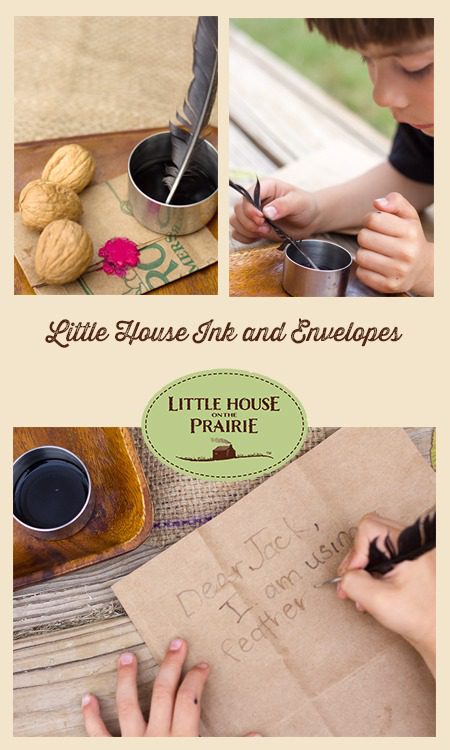
Homemade Ink & Envelopes
Often, pioneers had to make their own ink and letter envelopes and you can too by following this easy tutorial! Instructions for this fun pioneer-era DIY came from the book A Pioneer Sampler by Barbara Greenwood.
Materials for Homemade Ink:
- Walnut Shells
- Vinegar
- Salt
- Feather or Thin Stick
- Recycled Paper
- Sand
- Wax from a Candle
Instructions to Make Your Own Ink and Envelope:
1. Crush a heaping handful of walnut shells (my boys just used a nutcracker) and add them to a pot of boiling water. Boil until water has darkened to a suitable color. You’ll want it to be dark enough to contrast well with your paper. Add 1/2 teaspoon of vinegar and a pinch of salt to stabilize the dye.
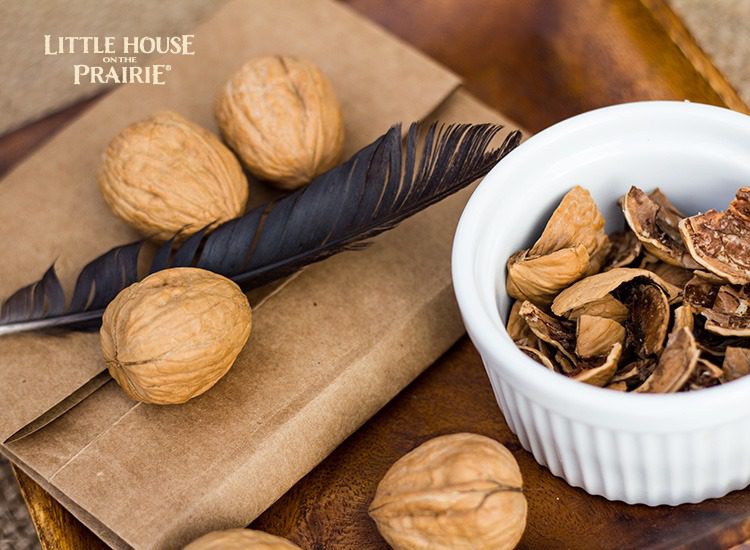
2. Let the ink cool off while you get your paper ready. We used a paper grocery bag, but any recycled paper will give an old-fashioned feeling. Clear a surface for writing, as it may be a bit messier than usual. This is a great opportunity to discuss how important it was to conserve valuable resources in the Little House on the Prairie era, just as it is today.
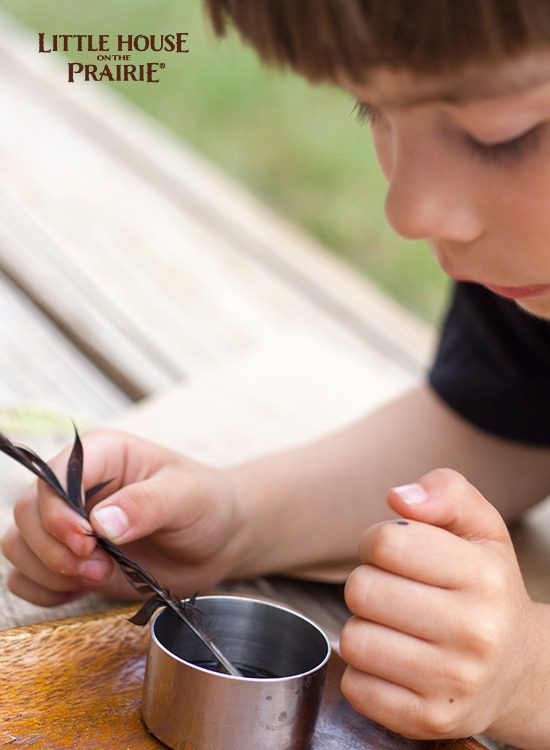
3. After the ink has cooled, use a feather or thin stick to write your message on your paper. Use a dash of sand to dry the ink. Historically, people would sprinkle the sand to absorb any excess liquid and help prevent smearing the ink.
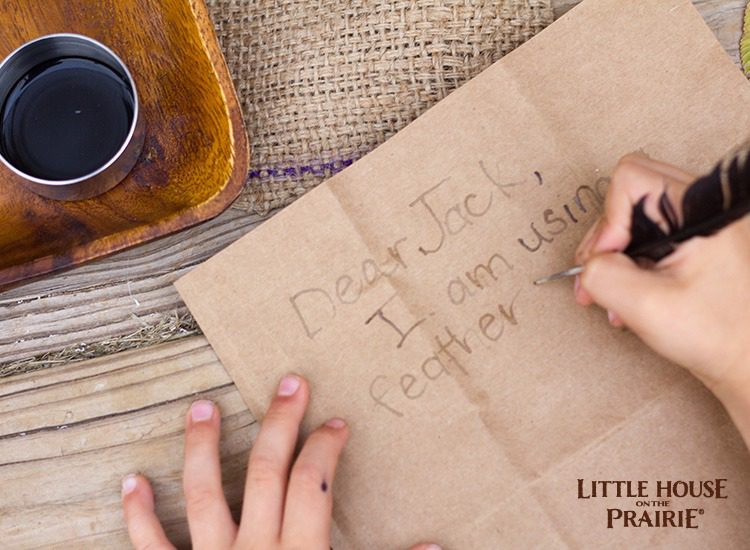
4. Once the ink has dried, blow the sand away and make your envelope. Fold the two sides of the paper inward to meet in the middle, then fold the bottom and top until overlapping. Drop a bit of candle wax to seal the envelope shut.
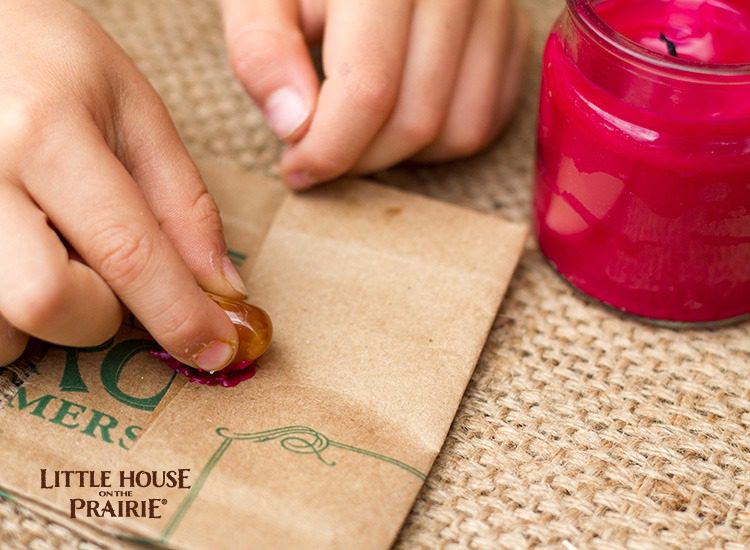
As you can see from this tutorial, a separate piece of paper and an envelope would have been excessive during pioneer days, so they wrote directly on the envelope and delivered their messages all on one page. How wonderfully resourceful and smart! Hope you enjoyed this tutorial and have fun sharing it with kids. They’re going to love the idea of making homemade ink and envelopes just like pioneers did during the Little House on the Prairie era!
Receive fun Little House on the Prairie crafts and ideas when you subscribe to our free monthly newsletter.
Vanessa Brady is the mother of two little boys and is an unabashed craft junkie. She is passionate about sewing, crafting, her children, and business. Find her original crafts at Tried and True blog.
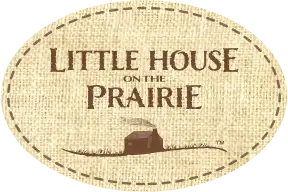

Yes, the rocker blotter can be found in many places, but is sometimes sold at ridiculous prices. An antique shop might have one, particularly if it is battered by use, for a reasonable price. The fact is, dip-pen writing is an inky business!
I love learning the way people lived then. I made walnut stain one year using the hulesof the walunts by boiling them in water outside on a open campfire it was so fun.
Other items such as Coal, soot & berries were also used to create inks. Although salt could be expensive at times, it was also useful for drying ink. Instead of wasteing it, many used what are called ‘Pounce Pots’ which is simply a container that looks a bit like a salt shaker (just slightly larger) & the top has a bit of a inward curve to it. Instead of ‘blowing’ the sand or salt away, you simply pour it onto the curved area of the pounce pot for reuse (the small amount left after that can simply be blown away).
Another popular item was called a ‘Blotter’ & is simply a curved piece of wood with a flat top & small handle. It varied what people used on the curved piece, but that part was used to gently ‘rock’ across a section of writing to soak up any extra ink & then you could gently blow on the ink to speed drying.